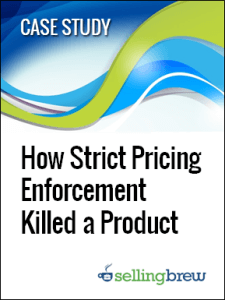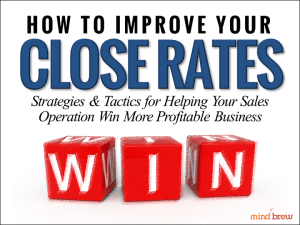Thanks to modern technology, today’s sales leaders have literally thousands of metrics at their disposal.
That seems like a good thing — and it is — but it also presents a challenge, namely, deciding which metrics to monitor and manage. You couldn’t possibly track them all. And even if you could, some of them are pointless.
Which ones, you ask?
That’s a good question, and it depends in part on the nature of your organization. Your industry, target market, sales strategy, sales objectives, business goals, and especially your stage of development are going to make some metrics vital, while others you can — and should — ignore completely.
We like to divide sales metrics into three categories: sales activities, sales objectives, and business goals. All three are important, and each affects the others.
Let me explain.
Sales activities are the day-to-day things that the sales team and sales ops team does. This includes things like making sales calls, completing RFPs, attending training, demoing the product, running reports — you get the idea. These are the only metrics that the sales management can impact directly. For example, if your call volume is down, you can tell the team to make more calls, and your call volume should go up.
Sales objective metrics track your progress toward the sales targets you have set for your organization. These metrics might include things like sales cycle time, quota attainment, conversion rates, etc. You can’t change these things directly; that is, you can’t just decide to improve your conversion rates and have it happen immediately. You’re going to have to do some other things to make that happen.
However, your sales activities do have a direct impact on your sales objectives. For example, if your goal is to decrease the amount of time it takes for a new sales rep to become more productive, increasing the amount of training should help. The key here is to make sure you monitor sales activity metrics that directly relate to your sales objectives.
Business results metrics indicate progress towards the company’s stated goals. These might include things like revenue, gross margins, the size of the customer base, and other things that the suits in the C-suite worry about.
Here, again, there is a cause-and-effect relationship, because meeting your sales objectives can help you achieve the desired business results. For example, if your CEO’s goal is to expand your customer base by 10% this quarter, you might set a sales objective for each customer service rep to land 15 new customers. And to support that sales objective, you might look for an uptick in your sales call volume.
As you can see, all three types of metrics are intertwined. The key is to focus on the sales metrics that relate directly to your company’s business goals. In the example above, metrics that relate to account expansion and customer retention might be completely pointless because your CEO wants to grow the company by landing new business.
Conversely, if you were a well-established company in a defined market, those metrics about call volume would be worthless. Instead, you would want to monitor account expansion and whether salespeople were following your account management procedures.
We cover these three types of metrics in greater detail in Sales Metrics Sales Leaders Should Be Managing. It offers more examples that can help you narrow down which metrics you want to track.
You should also watch Measuring the Financial Impact of Sales Ops. It explains how to use these metrics to demonstrate the value of sales operations to management.












